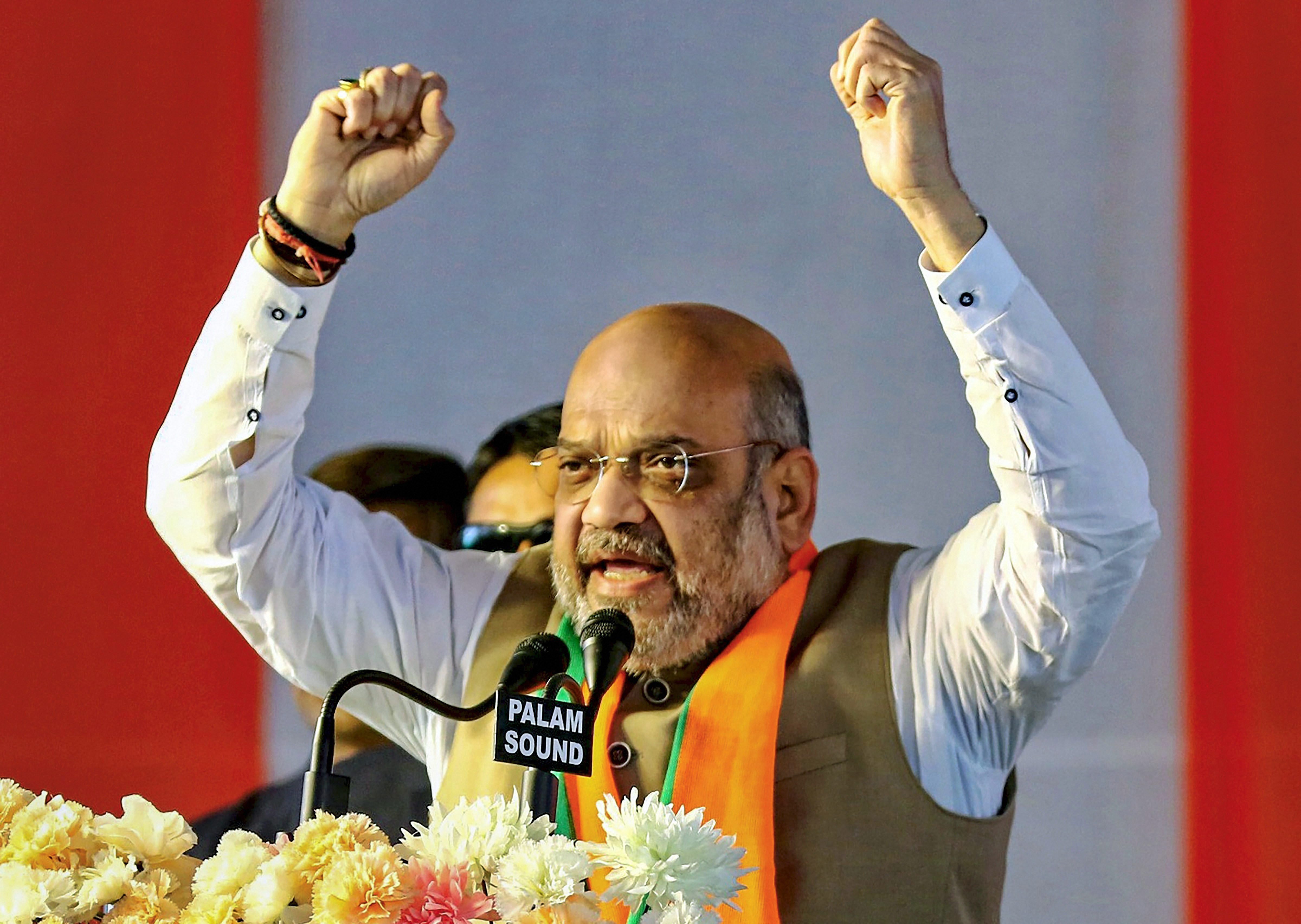
K'taka: BJP revives Lingayat issue to put Cong in a spot

The Lingayat issue, which did not work for the Congress in the May 2018 Assembly elections, may return now to haunt the party in the run up to voting in North Karnataka for the second phase in the state on April 23.
Consequently, the Congress is attempting to play down its support to a section of Lingayats who wanted their sect to be re-categorized as a separate religion. But the BJP, led by its chief campaigner Prime Minister Narendra Modi, is trying to resurrect the issue as in its reckoning the Lingayat gambit could work in favour of the party.
The issue initially cropped up prior to the May 2018 Assembly elections when the then Congress chief minister Siddaramaiah accepted a report of the Nagamohan Das committee set up by it which concluded that the Lingayats could be granted religious minority status. Based on this, Siddaraiamah recommended to the Central government to elevate the Lingayat status from that of a Hindu sect to an independent religion.
Unsurprisingly, this touched a hornet’s nest in North Karnataka where the Lingayats dominate. They constitute approximately 17 percent of the state’s population. While some within the community supported the move, others did not. During campaigning, the Congress defended its move saying it was just attempting to fulfil a long-standing demand of the Lingayats.
The BJP accused the Congress of divisive politics and charged Siddaramaiah of playing with the sentiments of the people to return to power. The issue went beyond party lines and a section of Congress leaders themselves were unhappy over the move. But many were supportive.
The Lingayat community owes its existence to a social reformer and a leader of the Bhakti movement Basavanna in the 12the century. Basavanna, a follower of the god Shiva, resented caste discrimination. He organised the marginalised and oppressed sections and incorporated them into a new sect which he called Lingayat, the followers of whom worship the Shiva linga. Lingayatism was largely based on the “vachanas” (sayings) of Basavanna.
Over the centuries the Lingayats grew powerful and many of them became landlords, owned big business and in more recent times entered politics, and became a dominating presence. In time, the Veerashaiva community that worships god Shiva and predates Basavanna considered Lingayats to be part of their sect.
The Veerashaivas who consider themselves staunch Hindus resisted the attempts of the Lingayats to fashion themselves into a distinct religion.
As for ordinary people, many were nonplussed with the controversy as they were not sure what a separate religion entailed. The immediate beneficiaries, if Lingayats were to form a separate religion, were those who run educational institutions as they would benefit from getting the tag of a minority religious institution. Other than this, there seemed to be no immediate benefit.
But scholars like MM Kalburgi who had spent years researching the sect and was considered an authority on the subject took the position that the Lingayats had all the attributes necessary for a distinct religion. So too a section of journalists like Gauri Lankesh. Whether it was their stand on the Lingayat issue or not, it is not yet completely clear, both were assassinated by suspected pro-Hindu, right-wing activists. Investigations into both the murders are still on.
The issue, which cut deep into society, was volatile and a calculated electoral gamble of the Siddaramaiah government. Eventually, when Assembly election results came out it became clear that the issue had not done any favours for the Congress. In fact, some believed that the Congress had lost votes by raking up the issue. But, Lingayat sections which stand for a separate religion category demurred and came out with huge advertisements in leading newspapers trying to explain how it was not this issue that had resulted in the Congress losing seats. On the contrary, they claimed that in Lingayat-dominated constituencies the party had done better than earlier.
This controversy has not been settled but has quietened down considerably. In the current Lok Sabha elections, the party think-tank appears to have decided not to bring it up. But, the BJP, which believes that the Congress lost votes due to this issue, has lost no opportunity in bringing it up hoping to smear its rival with it.
Within the Congress, one section led by influential leader D K Shivakumar recently publicly apologised for raking up the issue in May 2018 while another section led by powerful north Karnataka party leader and state minister M B Patil rebuked his colleague and defended the move to get the sect a separate religion status.
Meanwhile the central government, in response to the Siddaramaiah government recommendation, had turned down the move. But by then the elections were over, the Congress did not get a majority and the issue had lost steam. Now with the elections round the corner, the separate religion issue has again cropped up but is bound to die once voting concludes in this phase. It looks more like the case of the BJP attempting to revive a comatose horse just in case any votes can be hammered out of it.

